Why students pick the schools they do, part 2: The institutional personas shaping students’ college choices
In part one of this series, we explored how expected and unexpected traits—ranging from affordability to campus culture and even regional politics—shape student interest. Now, we’ll take that analysis further by introducing a new taxonomy of schools: nine institutional personas. Each persona represents a distinct combination of traits that influence student attraction. This framework goes beyond traditional segmentation methods (e.g., size, sector, or selectivity) to offer actionable insights that enrollment leaders can use to benchmark their strengths and refine their strategies.
In this blog post, we’ll explore one persona as an example, illustrating how enrollment leaders can use this framework to benchmark against peers, identify regional risks and opportunities, as well as assess competitive threats from other personas.
9 Institutional Personas
The Accessible Education Anchor:
Typically rooted in rural areas, these very small and typically private schools serve as vital resources for local and nontraditional students.
The Mission-Driven Learning Community:
These small colleges emphasize access and personalized attention, fostering supportive academic and social environments for a well-rounded education.
The Boutique Elite Institution:
Private colleges providing a rigorous academic environment, distinguished career outcomes, and close faculty-student connections in smaller settings.
The Inclusive Path to Opportunity:
Focused on accessibility, these community-centered institutions provide affordable education, particularly to low-income and first-generation students.
The Quintessential and Accessible College:
“Jack of all trades” schools in suburban areas that offer a balanced, traditional college experience, blending accessibility with a strong sense of community.
The Selective Academic Enclave:
Prestigious small to midsize institutions combine academic rigor, personalized support, and exceptional career outcomes in large and diverse locales.
The Well-Rounded Education Hub:
Midsize schools that excel in offering a variety of academic options and a dynamic campus life to students living in the region.
The Outstanding Opportunity Engine:
Large urban schools with strong ties to their state that combine deep affordability with extensive academic options to provide transformative opportunities for a wide range of students.
The Rigorous Academic Giant:
Very large, urban universities that combine selective admissions, extensive academic opportunities, and dynamic campus cultures to attract high-achieving students from across the nation.
How to Use the Personas
Step 1: Find your Institutional Persona
To start, you’ll need to identify the persona that best fits your school. Our full report provides detailed profiles of all nine personas, but let’s focus on one as an example: the Quintessential and Accessible College.
Below is a general characterization of schools in this persona, along with some vital statistics for these institutions, including their size, acceptance rate, and so on. You can see that these schools are typically smaller and less selective institutions.
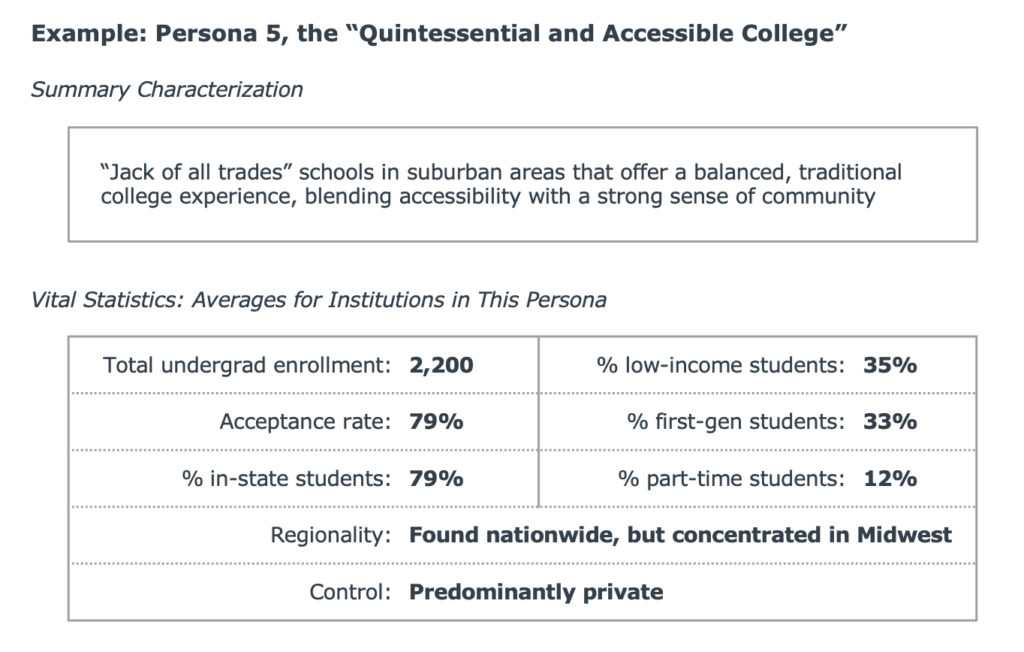
The next graphic continues the profile, giving nutshell assessments of these schools with respect to the five key attractor categories that we highlighted in the previous blog post, from campus community and culture to the schools’ admissions practices. You can see below that these schools typically strike a balance across many traits, combining moderate affordability and accessibility with a strong sense of community and campus life. While their appeal is broad, they’re not without challenges, such as slower population growth in their surrounding areas.
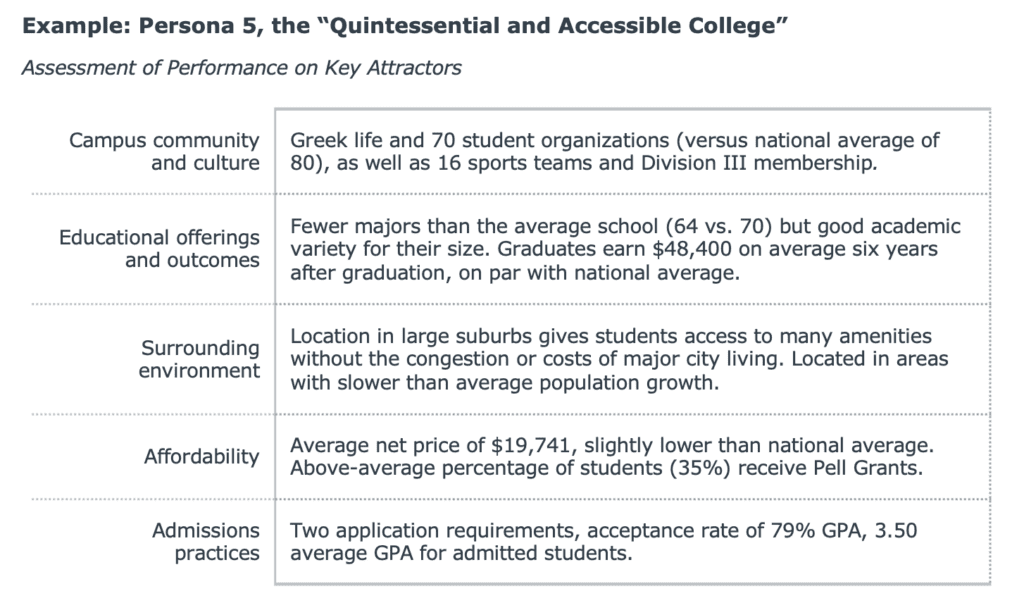
Note that as you complete this step, you may not find a persona that matches your school exactly on each trait. That’s OK. The idea is to find the one that’s the closest fit.
Read about the hidden impact of your student recruitment and influence channels
Step 2: Benchmark against your persona peers
Once you’ve identified your persona, the next step is benchmarking. Compare your institution’s traits to the persona averages to uncover your competitive strengths and limitations.
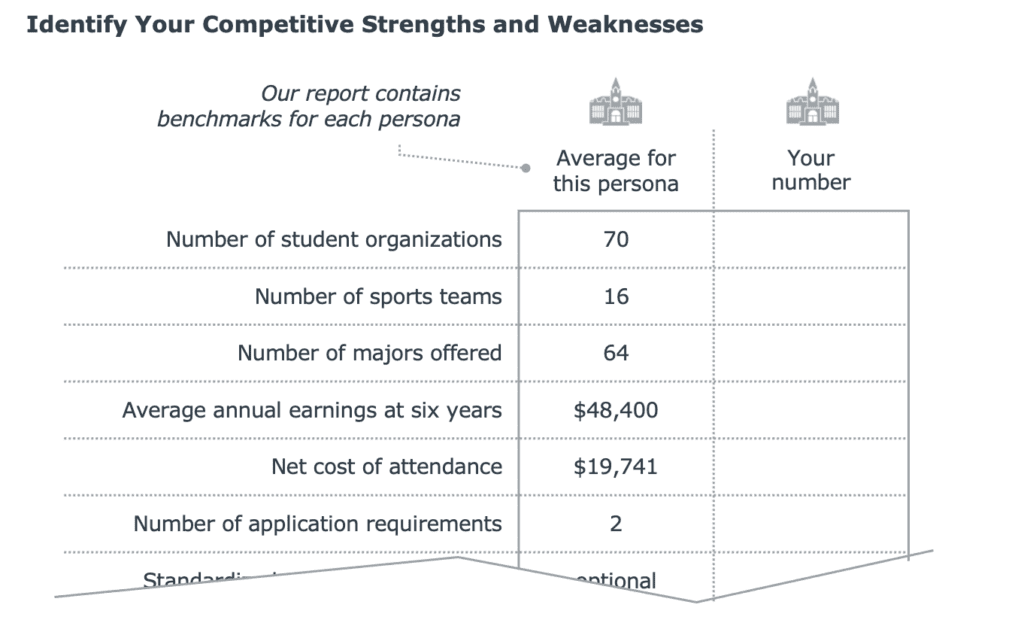
For instance, does your school offer more majors or a higher median graduate salary than the persona average? Or, on the other hand, are you less affordable or located in a slower-growth region? This analysis allows you to identify areas to highlight in recruitment messaging or opportunities for improvement.
Step 3: Identify regional risks and opportunities
Regional variations create distinct risks and opportunities, and the persona framework helps uncover these opportunities by highlighting how a persona’s traits vary geographically. While significant cross-regional recruitment may be more achievable for some personas than others, schools often have more potential to expand their reach than they assume.
The table below shows various attractor stats for “Quintessential and Accessible” schools, by region. As you can see, there’s considerable variation.
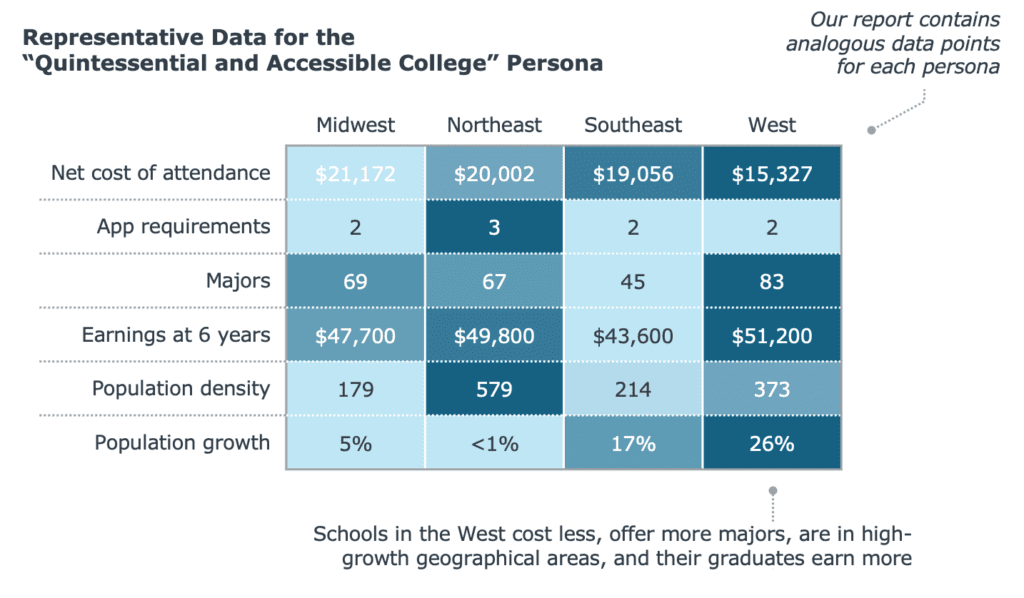
Take the “Quintessential and Accessible Colleges” in the West, for example. Compared to other regions, these schools tend to cost less, offer more majors, and are in dynamic, high-growth locales. Schools in this region can use these advantages to attract students from other regions—or guard against losing them to regional competitors.
Watch the on-demand webinar: Why Students Pick the Schools They Do
Step 4: Assess risks and opportunities in other personas
Finally, while most competition exists within any one persona, it is also important to look beyond your persona to find adjacent or rival personas that might pose competitive threats—or offer inspiration.
For example, “Inclusive Path to Opportunity Colleges” share many similarities with “Quintessential and Accessible Colleges.” In fact, as noted in the graphic below, the two are identical in many traditional respects: both are small, less selective, and above average in terms of the percentage of their students who are low-income and first-gen.
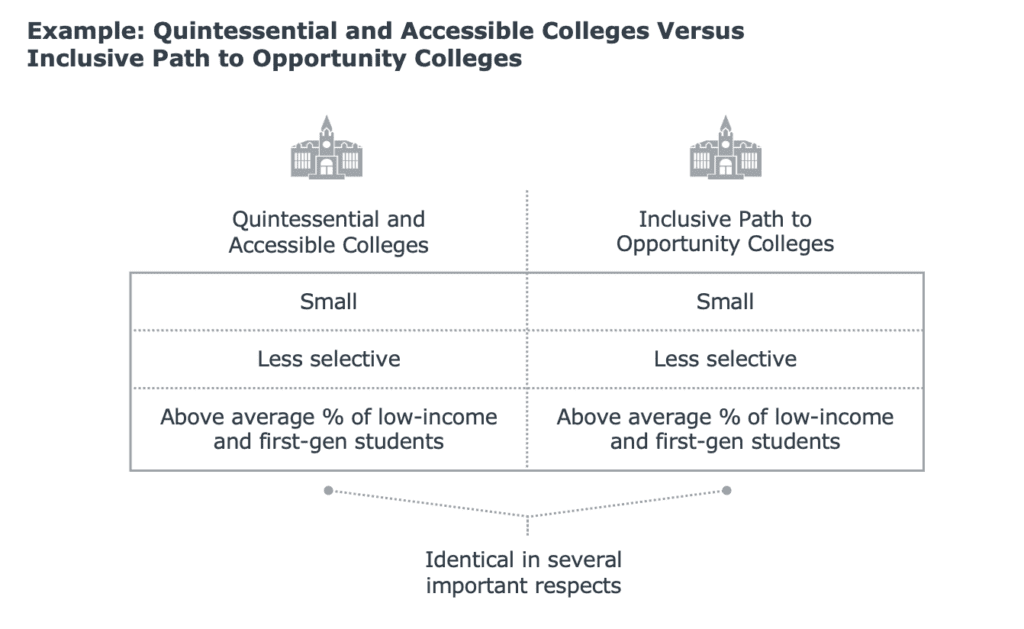
That said, if you look at the charts below, which compare these two personas across the five categories of traits that are key to student appeal, we can see that they do have crucial differences.
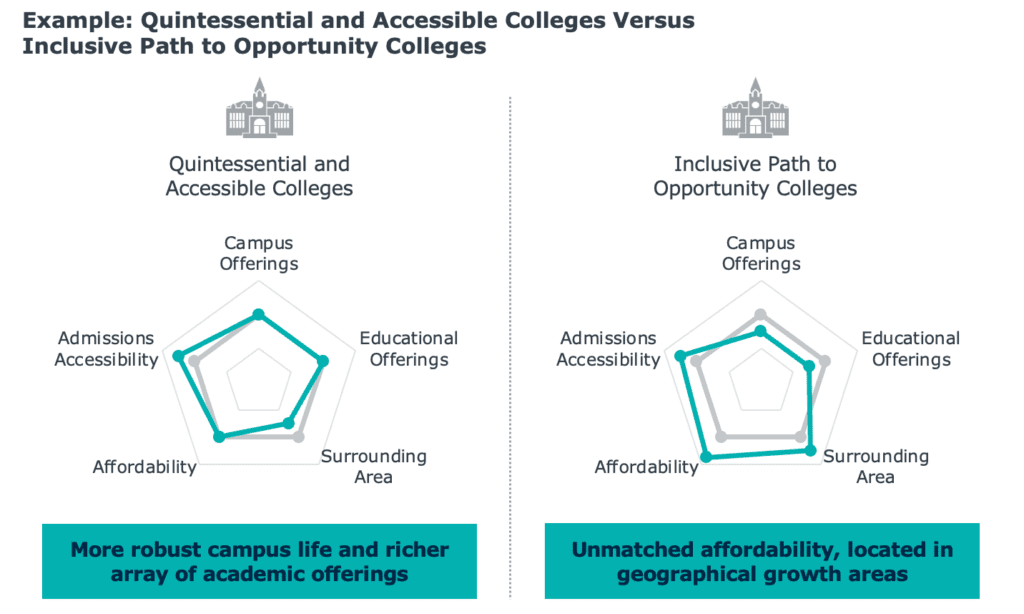
Both are highly accessible, but the “Inclusive Path” schools score better on affordability and on their surrounding areas, while the “Quintessential” schools offer a more robust campus life and a richer array of academic offerings. Understanding these differences enables schools to tailor their recruitment messages to highlight their unique value when competing across personas.
Check out our Resource Center: 9 Institutional Personas That Reveal How Students Select Colleges
Better understand your competitive position to inform strategy
1) Where does your school fit within your own institutional persona?
Examine whether there are traits you outperform that you can leverage—or areas where you underperform that you need to address.
2) How do regional dynamics affect your competitiveness?
See if there are regions where your persona performs better or worse and consider how that can shape your opportunities with prospects there.
3) Where do you stand in relation to other personas?
Determine what your competitive strengths or weaknesses are when recruiting against schools in adjacent or rival personas.

More Blogs

Demographics shape the enrollment landscape, but strategy determines success

What changed in the graduate lead gen landscape in 2025
